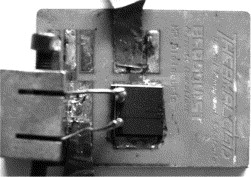Neural network
Self-Organizing Schedulers in LTE System for Optimized Pixel Throughput Using Neural Network
Wed, 2016-01-06 10:31 — Yousef DamaOne of the most important requirements for Long Term Evolution (LTE) is minimizing the costs and effort of network planning, optimization and configuration to the lowest possible level, while keeping a very good acceptable performance level which can be achieved by using self-organizing networks (SON) concept. This paper presents an efficient technique to train base station (E-NodeB) in order to choose the most appropriate and optimized scheduler in LTE system for each pixel inside an image using Neural Network technique, which leads to an optimized bandwidth and hence increased capacity. The simulation results using our proposed method using self-organizing assigning scheduler indicate an overall 33% saving in
Modelling and Simulation of Ingap Solar Cells Under Solar Concentration: Series Resistance Measurement and Prediction
Wed, 2010-04-21 14:32 — Hikmat S. Hilal, D.Sc.One of the important parameters, that commonly affect solar cell performances, is the series resistance. Such effect becomes more pronounced when working under higher illumination intensities due to higher generated photocurrents. Therefore, it is necessary to predict series resistance effects under such conditions. To know more about the series resistance effect and its interpretation, InGaP based solar cell performances were investigated, using high solar concentration levels (73.36 X, 201.19 X). To facilitate the prediction of series resistance effect, as a function of insolation level, a computerised analytical model, using neural network, is presented.



